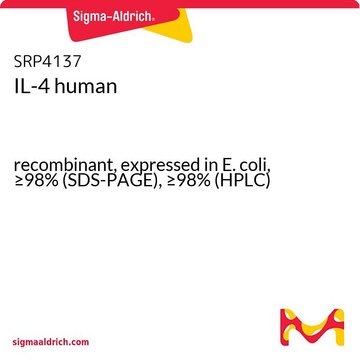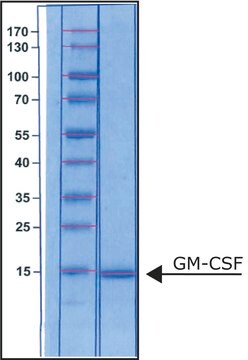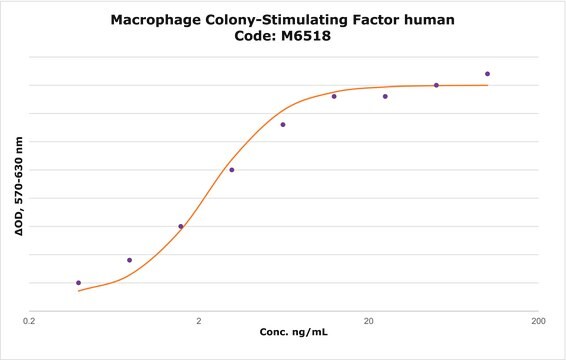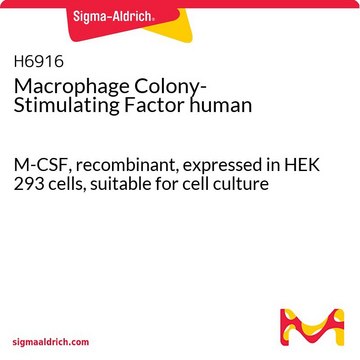I4269
IL-4 human
≥98% (SDS-PAGE), recombinant, expressed in E. coli, lyophilized powder, suitable for cell culture
Synonym(s):
IL-4, Interleukin-4 human, hIL-4
About This Item
Recommended Products
Product Name
Interleukin-4 human, IL-4, recombinant, expressed in E. coli, lyophilized powder, suitable for cell culture
biological source
human
Quality Level
recombinant
expressed in E. coli
Assay
≥98% (SDS-PAGE)
form
lyophilized powder
potency
≤0.400 ng/mL EC50
quality
endotoxin tested
mol wt
14.9 kDa (containing 129 amino acid residues)
packaging
pkg of 5 and 50 μg
technique(s)
cell culture | mammalian: suitable
impurities
≤1.000 EU/μg
color
white
UniProt accession no.
storage temp.
−20°C
Looking for similar products? Visit Product Comparison Guide
General description
IL-4 binds to two distinct receptors; the type I receptor, a heterodimer consisting of the IL-4Rα chain and the common gamma chain, γc, and the type II receptor, a heterodimer of IL-4Rα and IL-13Rα1.4
Naturally occurring IL-4 has a molecular mass of 12-20 kDa. Recombinant human IL-4 is a 14.9 kDa protein containing 129 amino acid residues. Human and mouse IL-4 share a 50% amino acid sequence homology, but their biological actions are species-specific.5
Application
Physical form
Analysis Note
Storage Class Code
11 - Combustible Solids
WGK
WGK 3
Flash Point(F)
Not applicable
Flash Point(C)
Not applicable
Choose from one of the most recent versions:
Already Own This Product?
Find documentation for the products that you have recently purchased in the Document Library.
Customers Also Viewed
Articles
The Interleukins comprise a disparate group of cytokines and growth factors that are produced by and released from leukocytes. Interleukin-1β (1L-1β) is released primarily from stimulated macrophages and monocytes and plays a key role in inflammatory and immune responses and may induce anti-tumor immunity.
Our team of scientists has experience in all areas of research including Life Science, Material Science, Chemical Synthesis, Chromatography, Analytical and many others.
Contact Technical Service










